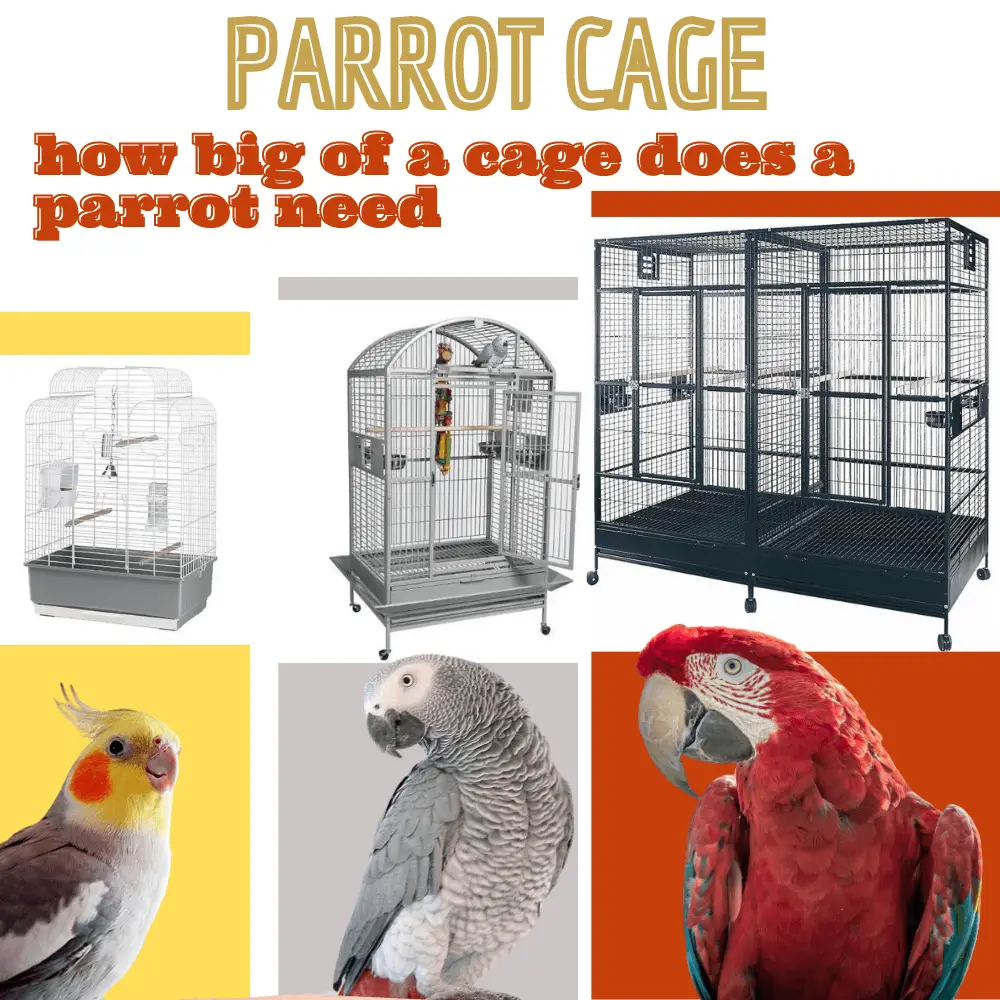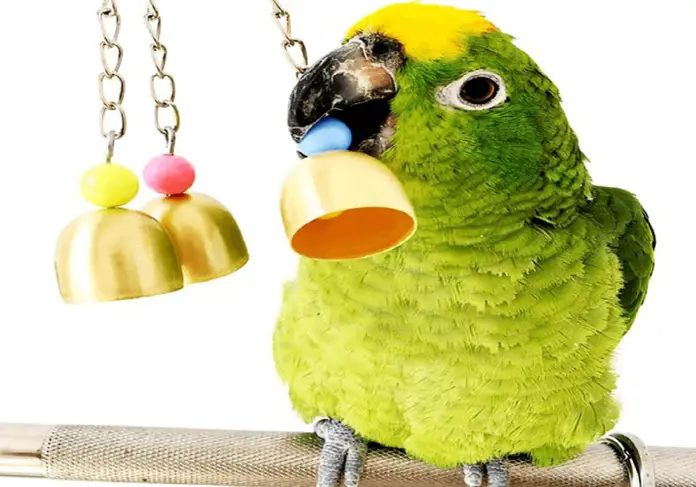- Choose the size of the pet bird cage
- Choose the cage according to the shape, the openings, and the material
What type of cage should you choose for your bird? The first criterion is obviously size, but there are others to take into account.
Best cage for african grey parrot
SOURCE:Top Compared
Parrot cage large
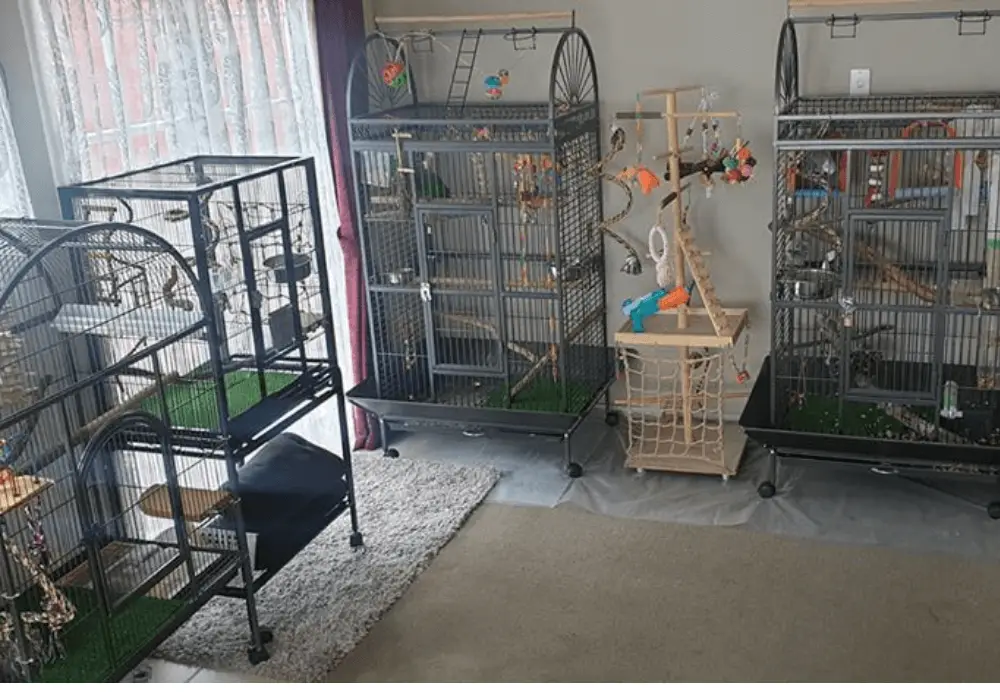
The dimensions of the cage depending on the size of the bird chosen. In all cases, the space offered by the model must allow the animal to benefit from a sufficient range of motion.
If you have chosen a large bird or if you plan to have several, you opt for the largest possible cage or ideally an aviary.
Parrot Cage With Playtop
SOURCE:MARLENE MC’COHEN
What is absolutely to be avoided in all cases are:
- The narrowness
- The overcrowding: this must, at all costs, be prevented, because it induces many problems both for the birds themselves and the person who cares. It is, indeed, difficult to properly care for a large number of animals. Just as the latter expose themselves to risks linked to hygiene and health, such as stress and the transmission of parasites, germs, bacteria, fungi, and diseases.
In addition, after purchasing the cage, it is imperative to clean it thoroughly. If it is a new model, cleaning is also essential, as well as a complete rinsing in order to eliminate the residues of chemicals and detergents which could be toxic for future occupants. And if it’s a cage used must also think about disinfecting.
Subsequently, this maintenance of the cage of its accessories (feeders, drinkers, nest boxes, perches, games …) is to be done regularly to protect the health of the bird.
How to Choose Bird Cages
SOURCE:YaheeTech
Choose the cage according to the shape, the openings, and the material
In addition to the dimensions, the shape of the pet bird cage is also a determining criterion.
Concretely, for birds who prefer to climb to bars, we will favor cage models which are built-in height. This is the case for parrots and parakeets in particular.
On the other hand, passerines are generally less likely to climb and should be able to fly and move horizontally quite frequently. For these birds, it is, therefore, preferable to opt for a cage of good width.
In either case, it will always be better to choose rectangular or square models, rather than more fanciful shapes which may, of course, be aesthetic, but which are not necessarily adapted to the needs of birds.
The openings are also to be taken into account when choosing the cage for pet birds. For parrots, it is recommended to choose doors with a complex closing system, as they are intelligent enough to unlock conventional devices.
The openings must facilitate the access of the person inside the cage to grasp the bird if necessary and for handling the accessories.
On the material side, there are PVC cages, but it is better to opt for the stainless steel or aluminum models. They are easier to maintain and more resistant.
Finally, cages with the removable bottoms are preferred because this configuration also simplifies maintenance.
Cage: Our selection for parakeets
In a previous article ( here ), I mentioned the 3 important criteria for me to choose the right cage.
On the other hand, I had not given an example of a cage that can be found on the market. I wanted to wait for feedback from users to find out more and to express myself on it objectively.
For this reason, a few days ago, I launched a subject on the Bird and You forum in order to collect the opinions of members on their cages following several points that you will see below, and here is the conclusion:
Make / Model: Cage Montana Madeira I
 Positive points: functional with its many doors/openings; feeders can be directly from the outside without putting your hands in the cage; easy to clean.
Positive points: functional with its many doors/openings; feeders can be directly from the outside without putting your hands in the cage; easy to clean.- Cons: No matter how much I look, I don’t see any.
- Practical or not practical: Very practical
- Recommendation yes or no: YES!
- An overall rating of the cage (/ 5): 5/5
- For which species: Pyrrhula conure, cockatiel, lovebird, Catherine parakeet, and other birds of an equivalent size …
 Make / Model: Cage Ferplast Piano 6
Make / Model: Cage Ferplast Piano 6
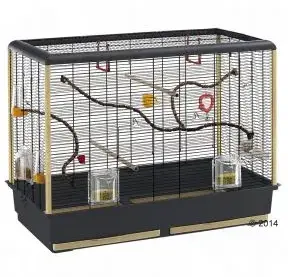 Positive points: Cleaning the cage is made easier by two very practical drawers. The cage for Parakeet Piano 6 opens on the front and on both sides.
Positive points: Cleaning the cage is made easier by two very practical drawers. The cage for Parakeet Piano 6 opens on the front and on both sides.- Cons: I see none.
- Practical or not practical: Very practical and easy to move
- Recommendation yes or no: YES!
- An overall rating of the cage (/ 5): 4.5 / 5
- For which species: Pyrrhula conure, cockatiel, lovebird, Catherine parakeet, and other birds of an equivalent size …
Make / Model: Hagen Vision II Model L02
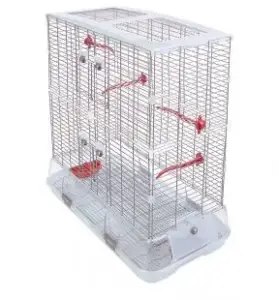 Pros: Long: allows birds to fly. Several doors. A small “roof” to protect the feeders from droppings. The plastic contour at the bottom prevents dirt from falling
Pros: Long: allows birds to fly. Several doors. A small “roof” to protect the feeders from droppings. The plastic contour at the bottom prevents dirt from falling- Cons: Heavy and bulky, you should not want to move it often
- Practical or not practical: Quite practical
- Recommendation yes or no: YES
- An overall rating of the cage (/ 5): 4/5
- For which species: Ideal for a pair of lovebirds or other birds of the same size.
Make / Model: Cage Ferplast Palladio 4
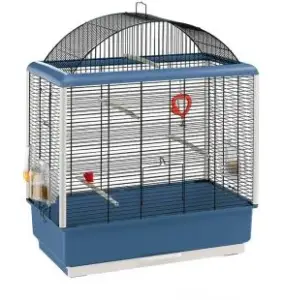 Pros: The feeders that swivel. The height of the bottom tray which limits the dirt falling around it.
Pros: The feeders that swivel. The height of the bottom tray which limits the dirt falling around it.- Cons: Be careful to close the feeders properly with the locking system.
- Practical or not practical: Practical
- Recommendation yes or no: YES
- An overall rating of the cage (/ 5): 4/5
- For which species: for small birds
What headache before choosing a cage
Who hasn’t looked for a long time to choose a cage for their pet bird?
I have been there too and I can assure you that this step is a real headache. Several questions are mingled in our little heads,
we first think of the adequate size of the cage, then the place where we are going to put it, then depending on this place, the criteria before can change.
And to complicate the research, even more, we think of the aesthetic side, so the cage must also be a “design” that matches our decoration. Meanwhile, the bird is forgotten (lol) …
In short, it’s real torture deep inside us and it’s quite human. We want to do well to prepare for the arrival of the bird.
Especially since this purchase can represent a significant investment in some cases. So often we do not have the right to make mistakes, otherwise, we will have to save more to buy another cage.
3 criteria for choosing a cage
1: Spacious cage
The cage must be spacious for the development of your birds and my motto is “The bigger, the better” especially in terms of languor, knowing that a bird flies horizontally.
According to my research and as a general rule, the width is at least equal to 2 times the wingspan of the bird that occupies the Parrot cage.
To be more precise, here are the recommended reference dimensions according to the size and weight of your bird: (Length X width X height)
- Small size with weight less than 70g: 60 X 60 X 60
- Medium size, with a weight between 70 g and 200 g: 100 X 60 X 60.
- Large size: 180 X 60 X h 60. Bars diameter 2.5 to 3 mm, spaced 2.5 cm.
Choose the size of the pet bird cage:
- For a Canary, a model with dimensions 40 x 20 x 30 cm may be sufficient. On the other hand, for a couple, it is better to turn to a cage of 60 x 40 x 50 cm.
- For a Parrot, the minimum recommended dimensions are 50 x 70 x 70 cm.
- For torque Perruches of small size, the cage must be at least 40 x 40 x 45 cm. If they are large, it will be better to move towards a cage of 150 x 50 x 60 cm at least.
2: Practical cage
This criterion is often forgotten because we are exhilarated and in a hurry to have the bird. We often stop at the first criterion (the size of the cage) to choose a Parrot cage without necessarily thinking of the constraints related to cleaning the cage.
Certainly, the cage must be spacious, but in my eyes, it must be also practical for simple, fast maintenance. This will avoid postponing what we can do today until tomorrow ?
To choose a practical cage, here are the important points to respect:
- The cage door should be large enough for easy access inside and for the bird to emerge perched on one hand.
- the cage must have a removable drawer, for easy, quick, and stress-free cleaning.
- the cage should have feeders and drinkers that are easy to access and preferably from outside.
- It is better to choose a Parrot cage with a flat roof, this will allow the storage of objects to optimize space.
- the cage should be light and easy to move.
3: Secure cage
The Parrot cage is the place where the bird will spend most of its time, it must be as secure as possible. Here are the important points to respect:
- The space between the bars must not allow the bird to stick its head through them, at the risk of getting stuck and suffocating. As a general rule, the space between the bars should be less than 1.9 cm for medium species. Tip: You can use the two fingers of your index and middle fingers to check the gap. If the two fingers do not fit, the spacing is good). For parrots, the space between the bars is 2.5 cm.
- Watch out for doors that open very simply. Parakeets and parrots are intelligent birds, and they’ll soon find out how to get out.
Parrot Cage And Stand
https://www.youtube.com/watch?v=MUQa_ahPt1o
SOURCE:wingsNpaws

